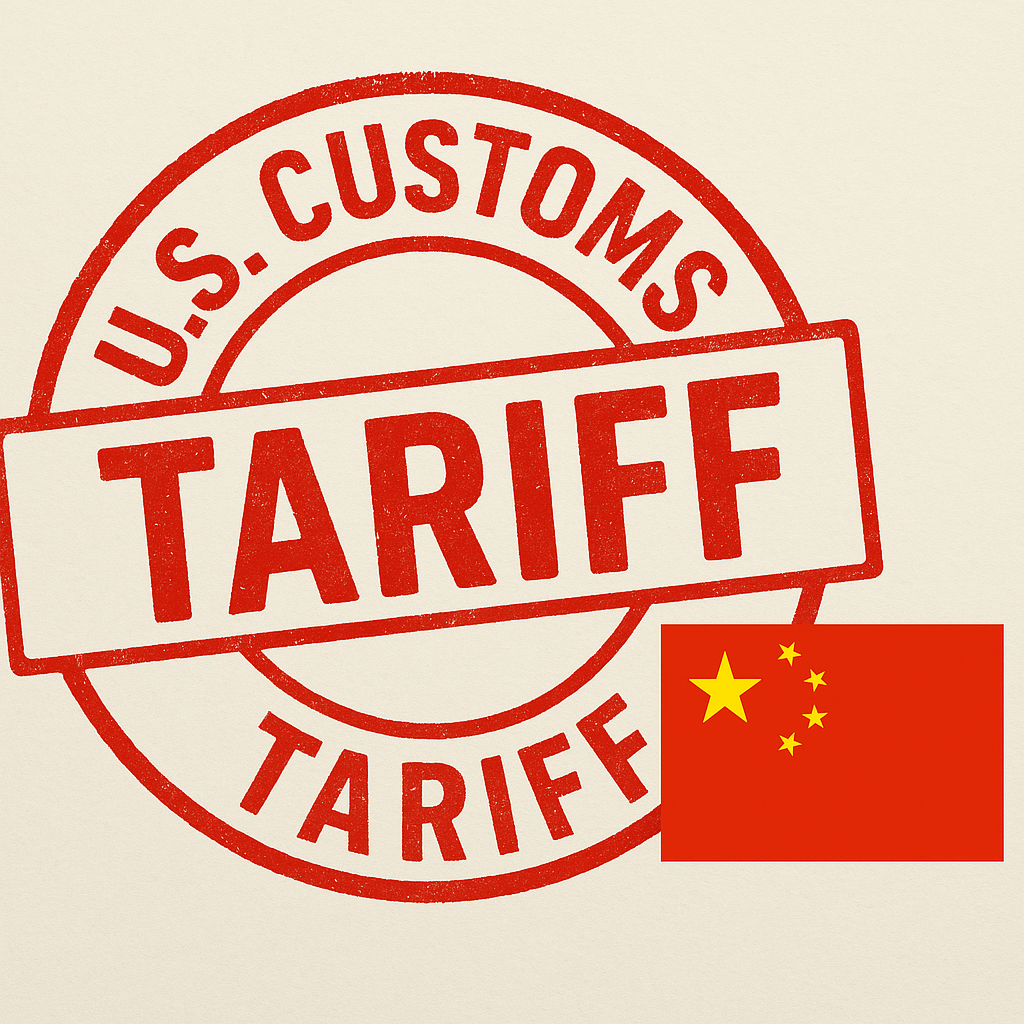On April 9, 2025, President Trump announced a 104% tariff on Chinese imports, marking a significant escalation in the ongoing trade conflict between the U.S. and China. This new tariff comes as a response to China’s previous retaliatory tariffs and trade practices that the U.S. has long argued are unfair.
What Is This Tariff About?

The 104% tariff is part of the Trump administration’s efforts to address the U.S.-China trade imbalance and pressure China into changing its trade practices. The U.S. government claims that China has been engaging in unfair trade practices, such as intellectual property theft and forced technology transfers, which have harmed American businesses.
This new tariff applies to a wide range of Chinese-made products and will significantly impact industries that rely on these imports. It’s also expected to fuel a tougher stance from both countries as they seek to gain leverage in trade negotiations.
What Can We Expect from This New Tariff?
- Higher Prices for Imported Goods: The most immediate effect of these tariffs will be an increase in the price of many goods that are imported from China, especially electronics, consumer goods, and furniture. As companies face higher costs due to tariffs, they will likely pass these costs on to consumers.
- Increased Tensions with China: This tariff is part of the broader trade war between the U.S. and China. It’s likely that China will respond with additional tariffs on U.S. goods, which could hurt American exporters.
- Potential Impact on Global Trade: These tariffs could disrupt supply chains, making it more expensive for companies to source parts and materials from China. This could lead to delays in production and higher prices for consumers.
What Does This Mean for U.S. Consumers?
For everyday consumers, the 104% tariff means that the prices of a variety of imported products will likely rise. Whether it’s smartphones, toys, clothing, or even home goods like kitchen towels and toilet paper, consumers will feel the pinch as these goods become more expensive. This could have a significant impact on household budgets, especially for families that rely on affordable consumer goods.
While the Trump administration has emphasized that these tariffs are designed to protect American workers and encourage domestic manufacturing, the reality is that many U.S. companies rely on Chinese-made products or components. As a result, consumers are expected to be the ones who bear the brunt of the price increases.
Conclusion
The 104% tariff that the U.S. just placed on Chinese products, announced on April 9, 2025, is a very important move in the ongoing trade fight between the U.S. and China. The goal behind this tariff is to make things coming from China more expensive in order to help U.S. businesses. The idea is that if Chinese products cost more, Americans will buy more products made in the U.S. This might help companies in the U.S. grow.
However, this new tariff is not all good news for U.S. consumers. The problem is that when products from China get more expensive, shoppers like you and your family will have to pay more for everyday items. This includes things like smartphones, clothes, shoes, and furniture. In short, prices will rise for many products from China. You will end up paying more when you go shopping.
Also, since China is unhappy with the U.S. imposing such high tariffs, they might decide to retaliate—which means they could place their own tariffs on products from the U.S. If that happens, it could cause even bigger problems for both countries. For example, U.S. companies that sell things in China might have to pay more to export their products. This could lead to more price increases and disruptions in how countries trade goods with each other, affecting the global market.
The goal of this tariff is to change how China does business with the U.S., especially when it comes to things like stealing technology or not giving fair deals to U.S. companies. However, there’s a big cost to this plan: U.S. consumers—the people who buy goods—will be the ones who feel the pain of higher prices. It will be harder for people to afford things that they need or want.
So, while the tariff might help U.S. businesses in the long run, it will likely make things more expensive for people in the U.S. in the short term. We’ll need to keep an eye on what happens next, because China might retaliate by putting their own tariffs on U.S. products, and this trade war could continue to grow.
Trade Imbalance:
- Definition: A situation where the value of a country’s imports exceeds the value of its exports.
- Example: The U.S. has a trade imbalance with China, meaning it imports more from China than it exports to China.
Retaliatory Tariffs:
- Definition: Tariffs that a country imposes in response to tariffs placed on its own products.
- Example: If the U.S. places tariffs on Chinese goods, China may impose retaliatory tariffs on U.S. products, escalating the trade conflict.
Supply Chain:
- Definition: The sequence of processes involved in the production and distribution of goods, from raw materials to final products.
- Example: Tariffs on raw materials from China can disrupt the supply chain, leading to delays and increased production costs.
Domestic Manufacturing:
- Definition: The production of goods within a country’s own borders, as opposed to importing them from other countries.
- Example: One goal of the tariff policy is to encourage domestic manufacturing in the U.S., reducing reliance on foreign imports.
Relate Link:
The Guardian: “Trump discusses ‘major’ tariffs on pharma imports at Republican dinner”
The New York Post: “Trump’s sweeping tariff plan kicks in as China hit with 104% levy”
Check out Global Trade Opportunities: Who Will Thrive in the New Economic Landscape?
